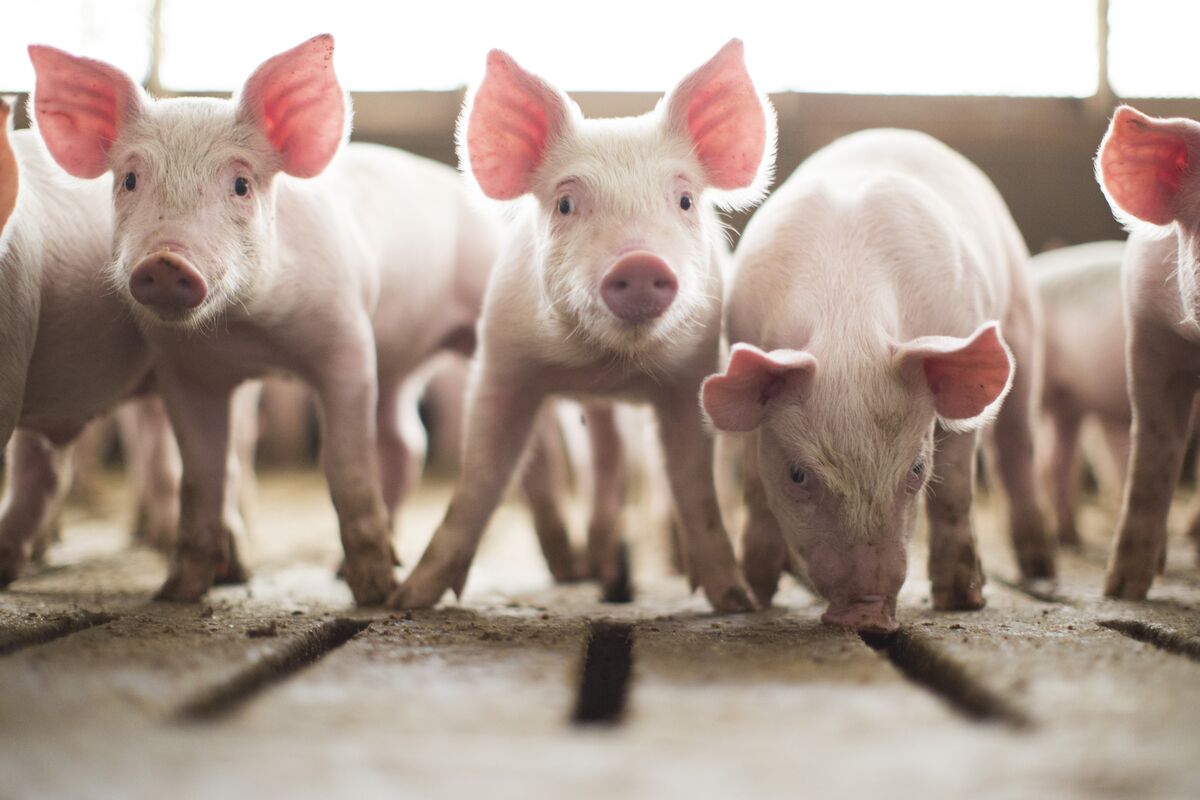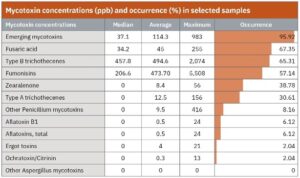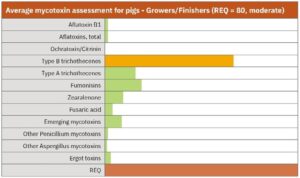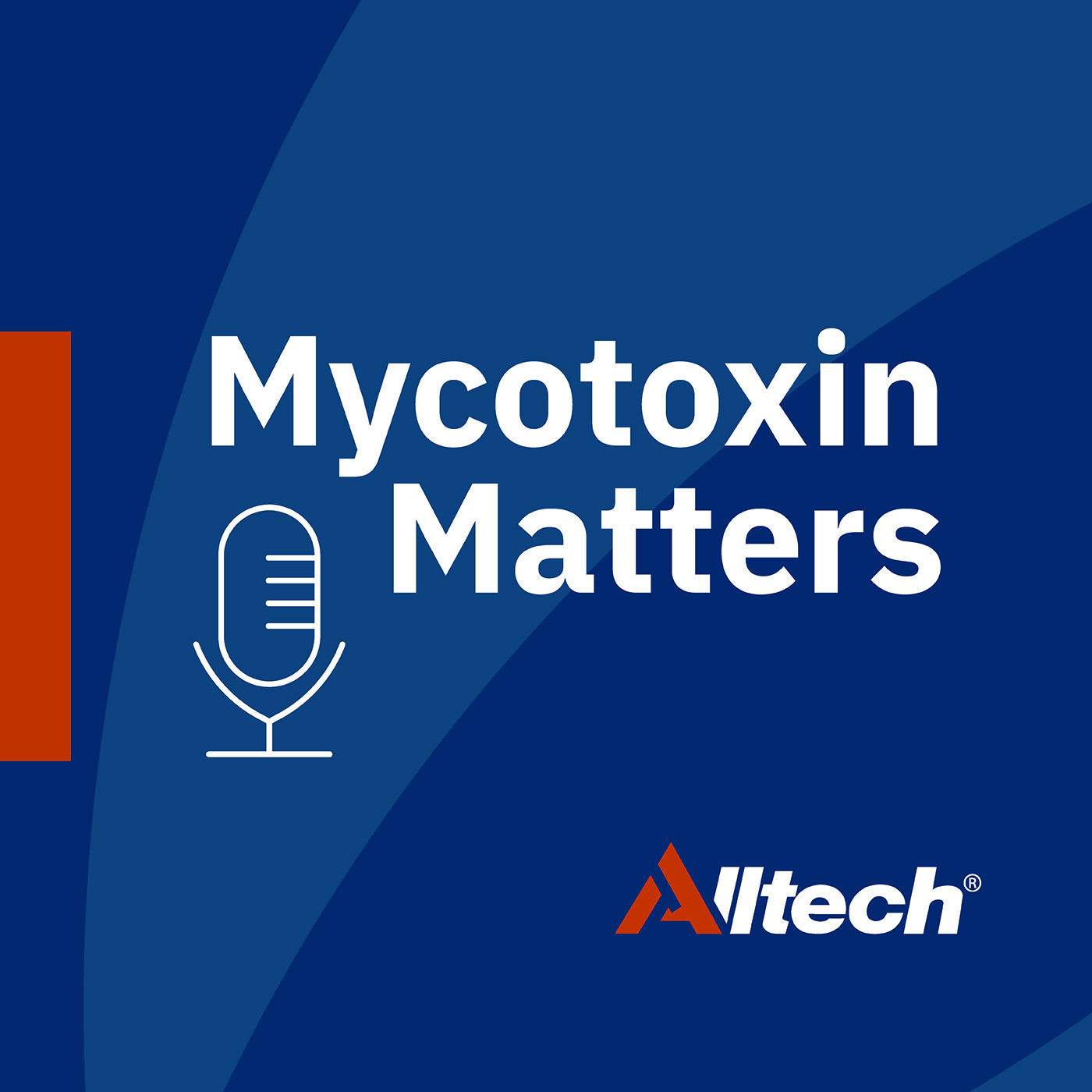Keep ahead of the threat
Stay up to date with the latest mycotoxin information by signing up to our newsletter

The relationship between mycotoxins and pathogens in pigs
Author: Dr. Radka Borutova, European Technical Support Manager, Alltech Mycotoxin Management
Click below to listen to the Mycotoxin Matters podcast episode with Dr. Hazel Rooney and Dr. Radka Borutova, hosted by Martin Minchin. In this episode Dr. Hazel Rooney and Dr. Radka Borutova explore the link between pathogens and mycotoxins in pigs. Discover how these hidden threats interact, compromising pig health and industry productivity. Delve into the specific mycotoxins and the common pathogens that pose a risk. Gain practical insights and innovative solutions to safeguard pig well-being and ensure a thriving swine industry. You can listen to the episode on Apple Podcasts, Spotify and Google Podcasts.
Mycotoxin contamination patterns
Despite the best efforts of the agricultural industry to reduce the presence of mycotoxins in the feed supply chain, the results of both lab and field-based testing programs continue to reveal the ubiquitous nature of these unwanted toxic compounds in feedstuffs destined for animal consumption. Each year, Alltech’s annual regional harvest analyses uncover the changing mycotoxin contamination profiles in new crop grains. Depending on where these new crop samples are harvested, Fusarium and Aspergillus toxins such as deoxynivalenol (DON), zearalenone (ZEA), T2/HT2, fumonisins, aflatoxins and emerging mycotoxins tend to be the dominant mycotoxin types that are present and are bringing the highest level of risk to ingredients such as corn, wheat and barley. These mycotoxins rarely exist in isolation; most new crop corn samples now contain an average of 6–7 mycotoxins, while small grains such as wheat and barley typically contain 3–4 mycotoxins.
Similar dynamics can be seen in the results of finished feed testing. Looking at pig feed samples assessed during the first three 3 months of 2023 through Alltech 37+®, 98% of samples contained two or more mycotoxins, with an average of 6.9 mycotoxins per sample. As shown in Figure 1 below, emerging mycotoxins are the predominant group in terms of occurrence in these finished feeds. However, when Alltech’s *Risk Equivalent Quantity (REQ) metric is applied to these analyses, Type B trichothecenes represent the greatest risk to the health and performance of pigs.


Fig 1a and 1b. The mycotoxin risk in finished feeds for pigs (January–March 2023). *Risk equivalent quantity (REQ) represents the risk from the cumulative presence of mycotoxins.
The dangers of pathogen presence
Another ongoing concern for pig producers globally is the presence of pathogens such as Salmonella or Escherichia coli (E. coli) in their herds. Salmonella is a type of bacteria or pathogen that can multiply within the animal’s intestine and lead to enteric disease. Similar to mycotoxins, specific categories or serovars of Salmonella can have a greater or lesser influence in specific animals. For the pig industry, Salmonella typhimurium and Salmonella derby are the two that represent the greatest level of risk to animal health. Diarrhea is the main clinical sign of Salmonella presence in a pig herd. A recent study in Ireland by Deane et al. (2022) of 820 pig carcass swabs detected an 11% positive rate of Salmonella typhimurium. Most countries have strict legislation on Salmonella presence. In the UK, for example, the Food Standards Agency carries out close monitoring of abattoir test results, and action is taken if the equivalent of a 6% salmonella presence is detected.
Presenting similar effects as Salmonella, including diarrhea, dehydration and shivering in some cases, E. coli is a frequent challenge on many pig farms, according to veterinarian Dr. Steven McOrist. Nursing and the post-weaning phase are high-risk periods for E. coli infection, when the problem is exacerbated by lower inherent immunity and by bacterial build up in fecal shedding. The challenge of controlling E. coli has come to the fore recently, particularly in Europe, where pharmacological use of zinc oxide – a solution that has proven very effective at controlling disease on pig farms – has had its permitted dosage levels reduced to just 150 ppm.
The risk of food-borne transmission of these pathogens is a large factor in the requirement for strict control measures. Food poisoning caused by exposure to either of these bacteria can lead to diarrhea, fever and stomach cramps in humans, and while these cases are rarely fatal, they can be extremely unpleasant and recovery usually takes a few days.
The coexistence of mycotoxins and pathogens in pigs
When looking at the occurrence rates of both mycotoxins and pathogens in pig herds, it would seem reasonable to conclude that pig herds can be exposed to mycotoxin and pathogen challenges at the same time. But is this something pig producers should be concerned about? The interaction between mycotoxins and bacterial pathogens in pigs is both complex and multifaceted. Individually, both mycotoxins and pathogens can hinder the health and performance of a herd, and additive or synergistic effects may present a greater challenge.
The first area to consider is how the ingestion of mycotoxins can leave pigs more susceptible to the threat posed by Salmonella. The immunosuppressive effects of mycotoxins can leave pigs more vulnerable to bacterial pathogens. The depression of immune cells, combined with the inflammation of certain organs, can reduce overall immune function and leave tissues more prone to contamination by bacteria and viruses. In addition to the decrease in immune response that can be caused by mycotoxins, the damage they cause to the intestinal lining may make it easier for bacteria such as Salmonella to invade and cause serious disease issues. A 2011 study by Vandenbroucke et al. concluded that the ingestion of DON-contaminated feed at realistic contamination levels may render the intestinal epithelium more vulnerable to invasive pathogens such as Salmonella typhimurium, with a resulting amplification of inflammatory processes in the gut.
Similar findings can be applied to the interaction between mycotoxins and E. coli. In a 2003 study that examined the effect of dietary exposure to fumonisin B1 (FB1) on intestinal colonisation by E. coli, Oswald et al. found that colonization of the small and large intestines by an extraintestinal pathogenic E. coli strain was significantly increased when FB1 was ingested. The authors concluded that the presence of FB1 in diets is a predisposing factor to infectious disease. A more recent study of piglets by Jia et al. (2020) demonstrated how low doses of both individual and combined DON and ZEA led to an increase in the presence of E. coli when compared to a control diet, while also impairing intestinal functions through inflammation and disruption of the epithelial barrier. Such effects may render an animal more susceptible to the deleterious effects of pathogens.
Although the latter study was primarily focused on the interaction between mycotoxins and bad bacteria, the authors highlighted how the presence of mycotoxins may be responsible for a reduction in good bacteria such as Lactobacillus and Bifidobacterium. In the study, the additive effects of DON and ZEA led to a significantly lower abundance of both of these desired bacterial strains.
While these studies sought to understand how mycotoxins could lead to greater pathogenic challenges, it is also possible that the presence of pathogens may exacerbate the effects of mycotoxins in pigs. Like mycotoxins, pathogens can cause inflammation and damage to the intestinal lining, which may lead to an even greater level of absorption of mycotoxins from contaminated feed. This increased accumulation of toxins in the animal’s body heightens the risk to overall health and performance.
In all, the observed occurrence of both mycotoxins and pathogenic bacteria, as well as the study of their interactions, highlights the importance of implementing comprehensive management strategies to address both challenges. This can include measures such as enhancing feed quality with a robust mycotoxin control program, implementing biosecurity protocols to reduce the risk of bacterial contamination, and providing appropriate veterinary care to ensure both the health and welfare of the animals and subsequently, the delivery of a safe food supply for the end consumer.
Whether the challenge is mycotoxins, pathogens, or both, Alltech has a set of industry-leading solutions to manage it. Find out more today by visiting Alltech.com.








